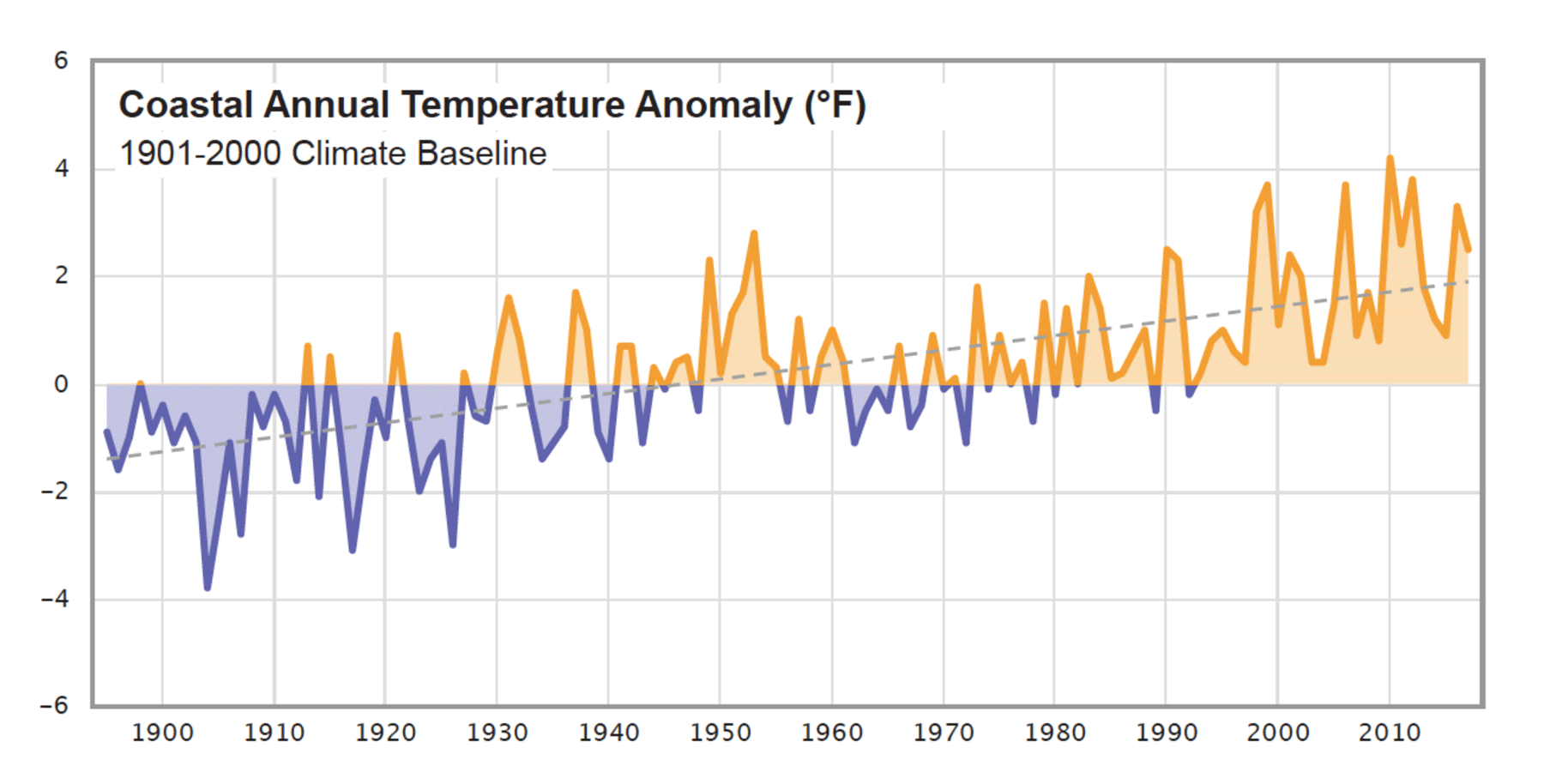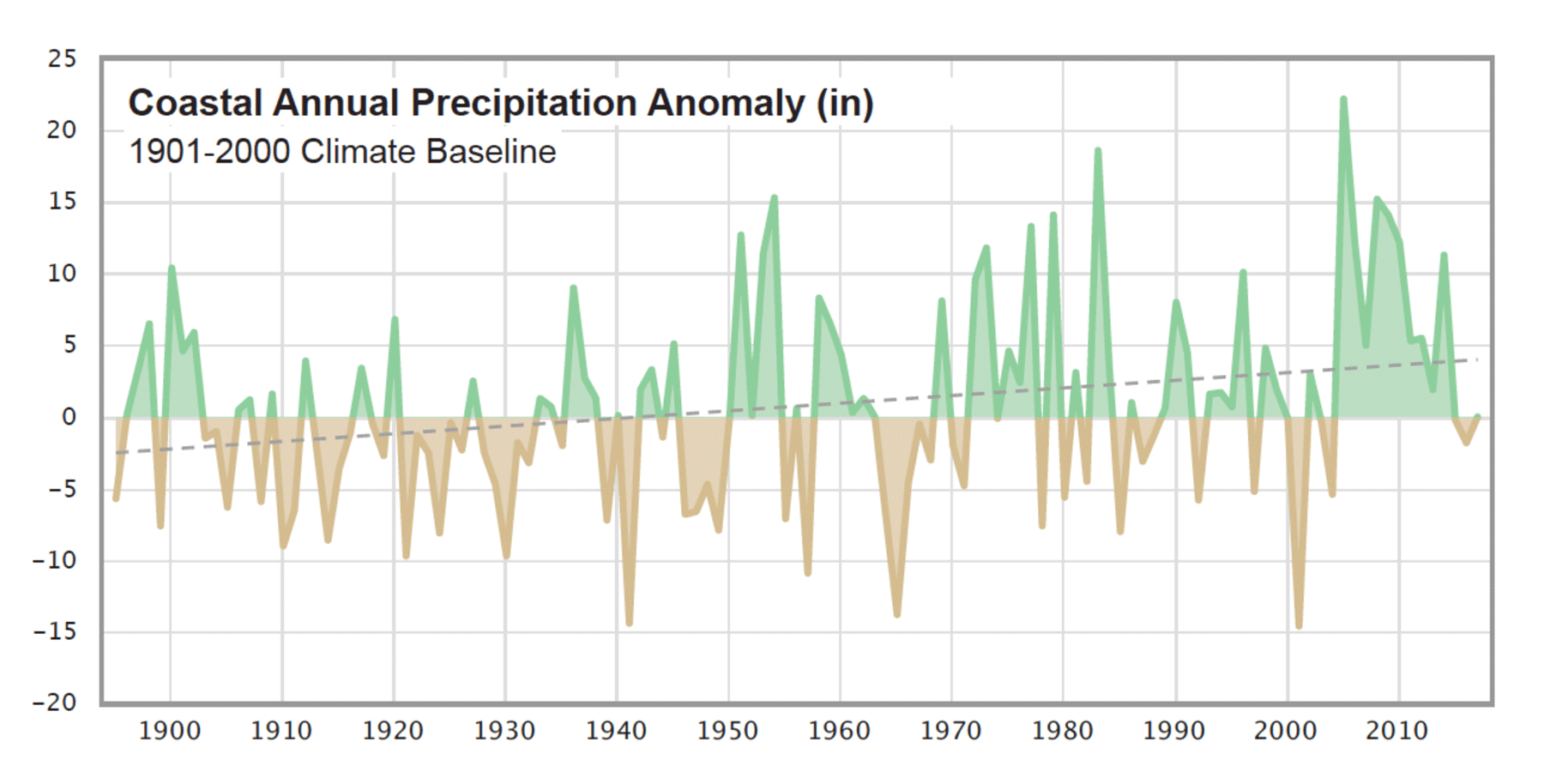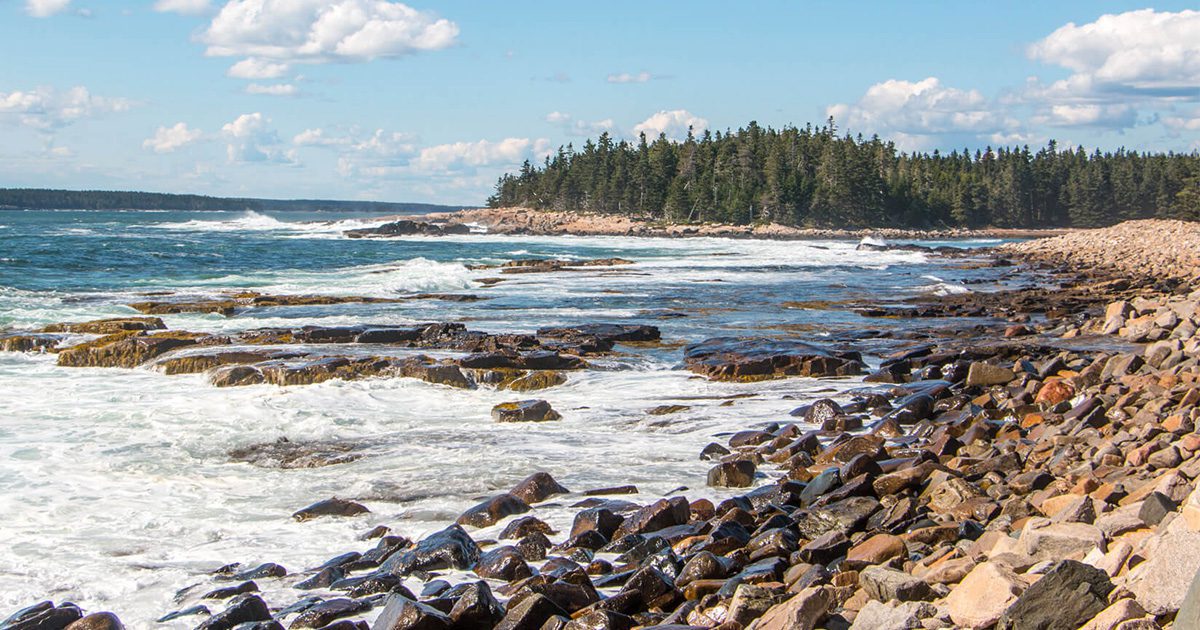A recent report by the University of Maine Climate Change Institute offers a vivid reminder not to overlook the power of ecological connections. Clear links, like lobster populations responding to warming sea water, are easy to grasp.
But this “Coastal Maine Climate Futures” report portrays more subtle and complex dynamics, such as correlations between annual blueberry yields and atmospheric pressure changes at the Gulf of Maine’s surface.
The institute published a more in-depth report on “Maine’s Climate Future” in 2015, and an update is underway. This briefer piece takes a new approach, says Sean Birkel, co-author and the state’s climatologist. It applies a scenario planning model — like that used in business — to anticipate the range of possible climate impacts that could affect farming and fishing sectors.
Whereas most predictive climate models “are best at a global scale and less accurate at a regional or local scale,” Birkel says, this report seeks to meet the need for useful smaller-scale projections, depicting in a focused region the “variability within the climate system in the next 20 years.” Variables the report cites include “increased atmospheric blocking patterns [over Greenland] that bring unusual cold waves, heat waves and extreme rainfall events,” El Niño weather patterns [linked to equatorial sea surface temperatures] and changes in the Gulf Stream off the eastern seaboard.
The report relies on reanalysis, which Birkel describes as a “model similar to a weather forecast but relying on historical data” (using satellite data from 1979 on and other data sets that stretch back to the late 1800s, when the first consistent records were kept in ships’ logs and weather stations). Working from historical observations, he adds, helps sort out “natural variability versus human impact.”

At one point, Birkel and co-author (and institute director) Paul Mayewski put contemporary changes in a far longer historic context: “With the eastern Arctic mean annual temperature having warmed as much as 8 degrees Fahrenheit in less than five years, this climate shift is as dramatic as the abrupt change from ice age to modern climate that took place 11,500 years ago.”
That shattering statement demonstrates the dilemma scientists face in conveying the magnitude of change underway — and the sobering challenge confronting us all.
“We’re in a different time period now,” explains Cameron Wake, a professor of climatology and sustainability at the University of New Hampshire.
Scientists could once design models around a stationary climate system but now “we’re in a system where every year is a ‘new normal.’ That demands a flexibility that is challenging, even troubling,” Wake says, “but it’s where we need to go.”
The scenarios in “Coastal Maine Climate Futures” might help residents grasp the breadth of ways that climate change could manifest here. But subsequent reports could be even more effective, planners suggest, if grounded in the questions local residents most need answered.

Including communities in framing research questions would “increase the likelihood this high-powered analysis could be used at the policy level,” notes Elizabeth Hertz, a consultant who worked more than two decades as a planner for the state. She sees research used most effectively when scientists “reach out to groups to ask ‘what do you need and how can I help you?’ ”
Eileen Johnson, program manager for environmental studies at Bowdoin College, finds sharing scientific data an iterative process, in which she seeks to make it ever more “understandable and scaled to the particulars of the community.” Translating climate data into meaningful policy changes takes extensive “human capacity,” she adds. She sends students out into the community to assess what’s needed and often has a scientific expert walk local groups through their options.
Johnson directs local planners to the state Department of Agriculture, Conservation and Forestry’s Municipal Planning Adaptation Guidance series and encourages them to link up with the Maine Climate Change Adaptation Providers Network, a group of more than 60 staff members from a variety of agencies, scientists and local officials interested in helping coastal communities constructively respond to climate challenges. CCAP sessions are hosted by coastal municipalities, giving local leaders opportunities to highlight climate-related work they’re doing.
Esperanza Stancioff, a climate change educator with the University of Maine Cooperative Extension who coordinates CCAP, is surveying municipal officials to better gauge their needs and hopes to create a website to share community-project information.
The synergy between scientists and planners in CCAP has sparked side projects, such as “Shore Up Maine,” in which staff members of the nonprofit Island Institute offer communities technical assistance to address effects of sea-level rise. Susie Arnold, a marine scientist at the Institute, says community exchanges, symposiums and roundtables with experts who can field questions have proven useful in helping local decision-makers learn more about climate challenges and strategies.
Arnold sees a growing interest among scientists in having their research applied, something Birkel strives for, too: “As a scientist,” he says, “I hope that my work can be of some benefit to society.”
The scientific process needs to be more grounded in dialogue, suggests Wake, who works routinely with the Coastal Adaptation Workgroup, New Hampshire’s counterpart of CCAP. It’s a matter of building relationships, he says, “maintaining open lines of communication and collaboration at the municipal level.”
From climate data, we can learn about vital ecological connections. But to act on that science, we’ll need to forge stronger alliances between academia and communities.







